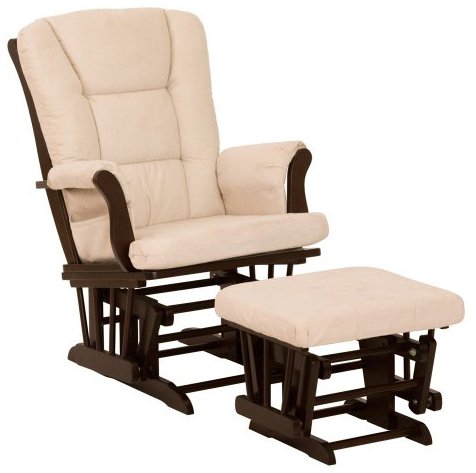Have you ever pictured yourself traveling around the world buying merchandise to resell at home? Have you found yourself in a foreign country casting about for a scheme to finance future trips? Do you wonder if it might be a good idea to augment your existing business with imported merchandise? Have you considered moving part or all of your production overseas to save on labor costs? If any of these scenarios sound familiar you can use this article to explore and refine your ideas. Here are 10 questions to guide you through the process and launch you on your journey into the global marketplace.
Child Craft Crib
Do you have experience overseas?
Child Craft Crib
If you do, is it travel or work experience? Working in a foreign country is very different from being a tourist. Some of the qualities that make a place great to visit can make it an extremely frustrating place to work. For instance, Bali is a fantastic island to visit. The people are friendly and the island is beautiful. Tourists particularly enjoy the elaborate temple ceremonies and processions. For a businessperson the Balinese culture that many visitors find so charming is also a challenge. People spend a much larger percent of their time on ritual activities, leaving less time for production. Time is not enshrined as a sacred linear concept as it is in the United States. Estimates of when an order will be complete are gauged to please the customer and often have little or no relationship to the actual amount of time needed to complete it. Even the wonderful creative impulse that permeates the culture can prove daunting. For instance, a craft person might not think twice about adding purple polka dots to your order if he thought it would look better.
How much experience do you have with the specific country you are intending to import from?
Are you familiar with the culture and language? Such familiarity goes a long way toward minimizing expensive misunderstandings. If you don't have a lot of experience you should learn as much as you can and consider hiring a really good translator who can also give you pointers in local etiquette. Knowledge of local customs can help you establish a good relationship with your suppliers. For instance, in some cultures loud complaints about prices are a natural part of the deal making process, while in other cultures people go to great lengths to avoid confrontation. In those countries, Americans often appear aggressive and rude if they don't tone down their negotiating style.
Even if you have good language skills it can be helpful to engage the aid of someone who is truly bilingual. On a recent buying trip to Mexico I ordered a large quantity of earrings. My Spanish is limited but I brought along one of my employees who is fluent in Spanish. Her help was critical in explaining the details of the modifications I wanted to make to existing samples. Nevertheless, when the order was delivered there were still several errors that resulted from language-based misunderstandings.
How much business experience do you have?
A solid grounding in basic business principles will help you evaluate opportunities as they arise. It is important to have a realistic view of how potential revenues balance out against all of the costs involved in creating and sustaining a new venture. Many people seriously underestimate costs. When you price your product you need to consider not only the price you paid for each unit but all of the overhead expenses like shipping, duties, travel, phone calls, faxes, foreign exchange fluctuations, rent and personnel. It is very wise to do a full budget before you spend a cent. Calculate how many items you would need to sell, at what price, just to recoup your initial investment. Include a 10% buffer for unanticipated expenses and double check to be sure the price you intend to charge for your product is competitive.
Do you like to buy and sell?
Many people like to shop but don't like to sell. Some find bargaining, an inevitable part of doing business in the developing world, unpleasant, while others relish the challenge. It takes a great deal of skill and a certain amount of innate talent to negotiate a favorable deal without insulting the vendor. Be honest with yourself about these issues. It is one thing to be caught up in a surge of enthusiasm for local handicrafts or a desire to return regularly to a favorite locale. It is quite another thing to return home with huge quantities of products that need to be sold. Many people find it stressful to make cold calls, the inevitable process of contacting potential new clients. For others, keeping track of expenses and setting prices are too much of a burden. Be honest about your goals as well. It is much less difficult to buy and sell a few things to friends and relatives in order to subsidize future trips than it is to set up a viable business with the potential to support a family.
Do you have specific products in mind?
Do you know the market for these products? Do you have a good feel for the price range and quality level that potential clients are looking for? Do the legwork involved in answering these questions. To avoid expensive mistakes, talk with potential clients before you invest in large quantities of stock. If possible, bring samples with you to discuss. When I first started importing from Indonesia I sold brightly colored hand painted and carved fish mobiles. They were very popular with my friends as accessories in children's rooms, especially over cribs. I thought I had a sure market in toy stores but when I did the research I discovered otherwise. Toy stores were very reluctant to sell products that did not have official child-safe stamps of approval. The organizations that tested products and provided these seals of approval charged steep fees that only large companies could afford to pay. I also encountered tough questions that I had not thought to ask. For instance, is the paint toxic? Could the nylon thread used to tie the fish together get wrapped around a child's neck?
What production issues can you anticipate?
Is your product a natural resource or something that needs to be manufactured? How automated is the manufacturing system? What quality control standards are in place? Products with a great deal of hand labor involved will have more variation that machine made products. In either case, overseas quality standards are often much more flexible than the American consumer will tolerate. Don't make any assumptions about quality, honesty or delivery dates until you have established a relationship with your supplier. Some countries are notorious for providing great samples and then delivering shoddy goods or downright frauds. Other mistakes may be honest but just as disastrous. By placing small initial orders, you can minimize the damage and slowly develop a rapport with your suppliers. It is also crucial to have a screening mechanism in place. You should quality check all shipments before you pay. Since most overseas vendors require cash up front before shipping, this will entail additional trips and the associated expenses. In some cases it is possible to hire independent commercial agents to quality check for you but that option does introduce added risk.
How will you handle payments?
In some countries it is very simple to arrange letters of credit or wire funds from the United States directly to your supplier. With very small companies, or undeveloped countries, arranging payment can be more complicated. There are some situations where you might need to carry traveler's checks with you and others where only cash will do. Remember that if you leave the United States with over ,000 in cash or travelers checks you must declare it with customs when you depart. Most countries also ask you to declare how much cash you are carrying when you enter the country. Failure to declare is against the law. On the other hand, declaring large amounts of cash can make you the target of unscrupulous officials trolling for bribes or "gifts". It is crucial to research your destination ahead of time so that you can avoid awkward situations.
How stable is the country you plan to do business in?
If you are planning to expend time and money building up the market for you product it is wise to consider the stability of the country and the region before committing your resources. This includes fiscal stability as well as political stability. Sharp variations in the exchange rate can wreck havoc with importers. If the local currency gets too strong, your dollars will buy less product, pushing up the prices you will have to charge your customers. It is not uncommon for whole markets to dry up in this manner. On the other hand, if the currency drops, your product, with its new low prices, may suddenly become extremely attractive to buyers. While this situation seems like a dream come true it isn't always so simple. When the Asian economic crisis hit, the prices for Balinese handicrafts fell by almost 80% overnight for people with dollars to spend. Existing products were snapped up but when the vendors went to replace them they found the price for crucial imported materials and supplies had skyrocketed. Not only that but distributors were hoarding and many items were not available for any price. In addition, vital elements of the infrastructure like shipping and banking collapsed, making it almost impossible to do business for several months.
Are you familiar with import/export regulations?
Don't forget that the United States has a whole range of regulations concerning imports. Depending upon the product and the country of origin you may be subject to duties. Some items, like clothing, have quotas, which impose additional costs and restrictions. Strict labeling requirements also apply to imported goods. Other merchandise might require licenses or permits. It is the importer's responsibility to make sure that the products she imports meet all of the admissibility requirements and that the proper permits are obtained before the goods arrive in the United States. A professional customs broker can help you avoid getting caught in this labyrinth of rules and regulations.
Regardless of whether you send your merchandise through the international mail system or ship it though a commercial shipping company, all goods entering the United States must be cleared by U.S. Customs. The process of presenting documents for clearing goods through customs is called an "entry." For the most part, shipments valued under ,000 can be cleared with an informal entry. In an informal entry the Customs inspector determines the classification of the goods and completes the necessary forms. Shipments with higher values require a formal entry.
If the merchandise is sent through the mail, you or the merchant must attach an international customs declaration with a complete and accurate description of the packages contents and value. If the package is worth less than ,000 (and does not contain textiles or other restricted goods), a mail entry is prepared by a Customs officer and then the package is returned to the Postal Service for delivery. A handling fee and any applicable duties are collected by the postal agent at the time of delivery. If the parcel requires a formal entry, you will receive a notice to file the necessary paperwork at the nearest Customs office. If merchandise is sent through a commercial shipping company, the shipping company, not Customs, is responsible for notifying you of the package's arrival at Customs. At this point, either you or your customs broker must file the appropriate entry.
The following documents are necessary when filing a formal entry:
1. A bill of lading, airway bill or carrier's certificate.
2. A commercial invoice which shows the value, quantity and description of the merchandise.
3. Entry manifest (Customs form 7533) or Entry/Immediate Delivery (Customs Form 3461).
4. Packing lists, if appropriate, and other documents to determine whether the merchandise may be admitted.
The trickiest part of a formal entry is determining the correct tariff classification for the product in question. Goods are categorized according to the Harmonized Tariff Schedule. The duty rate is tied to the classification number and will also vary by country. U.S. Customs advises in its literature that, "Classification is more than simply looking an item up in the index. It is a very complicated process requiring the application of the General Rules of Interpretation; the section, chapter and subheading notes; the Explanatory notes." The importer is responsible for properly classifying his merchandise before entry. Since the rules are Byzantine and open to interpretation, it is wise to use a professional customs broker familiar with the process. Even so, two different Customs inspectors might have different opinions about the proper classification of a given item. If you plan to repeatedly import the same product, you should request, in writing, a binding classification ruling from the National Commodity Specialist Division of U.S. Customs.
Shipments of textiles are complicated by quota restrictions. In effect, each individual garment requires a visa. Since only a limited number of visas are issued each year, they may or may not be available when you need them. The cost will fluctuate by country and season, making it difficult to budget in advance. Other restricted and prohibited goods include medications and medical devices, goods that violate trademark or copyright protections, alcoholic beverages, certain foodstuffs, certain animals and animal products, narcotics and certain weapons.
U.S. customs publishes two useful pamphlets: International Mail Imports and U.S. Import Requirements. These are available through your local port or on the U.S. Customs web site.
Most countries restrict or even forbid the export of certain products. These items might include endangered species or antiques that are considered natural treasures. Some of the contraband items are obvious but there are many restricted products you might not anticipate. Check with local authorities before purchasing large quantities of any product for export.
If you don't have much experience importing, you might want to choose larger vendors with exporting experience. Such vendors will be more likely to understand American expectations. They can also help you navigate local regulations, shipping and banking issues. These companies will charge a premium, but in the long run, they could save you money.
What is your risk profile?
Last but not least, examine your risk profile. Some people thrive on risk while others are completely risk averse. Importing can be very profitable but it is also extremely risky. There are an infinite number of things that can and will go wrong as you navigate the geographical and cultural divides of our planet. Personally, I find the challenge invigorating, but it can also generate a great deal of stress. There is no way to plan for every contingency or predict every disaster. Stable currencies collapse unexpectedly, as do governments. Markets can prove erratic as well. Sometimes a business can withstand these events and other times you have to walk away from years of work and investment.
As an importer, you will also be served well by the ability to improvise under difficult conditions. To survive, you must be willing to change course rapidly to adapt to the conditions of an unfolding crisis. Creative problem solving can mean the difference between success and failure.
How to Start an Import Business
Child Craft Crib
Dec 06, 2011 19:25:57

Click for larger image and other views
 >> Click here to update Cyber Monday prices for Stork Craft Aspen Combo Dresser Chest, Cherry <<
>> Click here to update Cyber Monday prices for Stork Craft Aspen Combo Dresser Chest, Cherry <<
Cyber Monday Stork Craft Aspen Combo Dresser Chest, Cherry Feature
- Made of solid wood and wood products
- Easy assembly using cam-lock construction
- Steel drawer glides with safety stop
- Round wooden pulls
- Durable non-toxic finish, tipping restraint included
Cyber Monday Stork Craft Aspen Combo Dresser Chest, Cherry Overview
Your baby deserves the best. Your child's safety is our greatest concern. Stork Craft strives to exceed your expectations in the areas of safety, performance, usability and style. All Stork Craft products meet or exceed domestic and international regulatory standards for juvenile furniture safety and performance, and are carefully designed to mitigate the risks of potential hazards to your child. Features: Made of solid wood and wood products Easy assembly using cam-lock construction Steel drawer glides with safety stop Round wooden pulls Durable non-toxic finish Tipping restraint included Finish: Cherry JPMA Certified Assembly Instructions
SAVE NOW on Cyber Monday offers below!
Available In Stock. |
| This Cyber Monday Stork Craft Aspen Combo Dresser Chest, Cherry ships for FREE with Super Saver Shipping. |
|

Limited Offer Today!! Stork Craft Aspen Combo Dresser Chest, Cherry Cyber Monday and Black Friday 2011 Deals
Kids Bunk Beds Guard Rail For Toddler Bed










